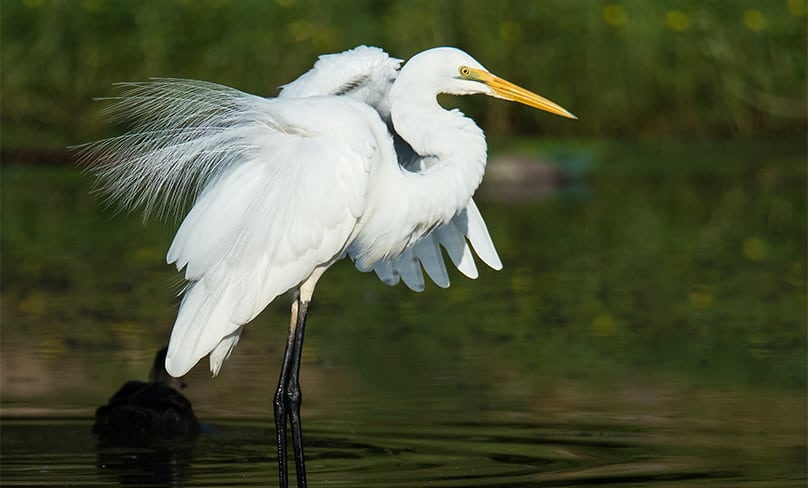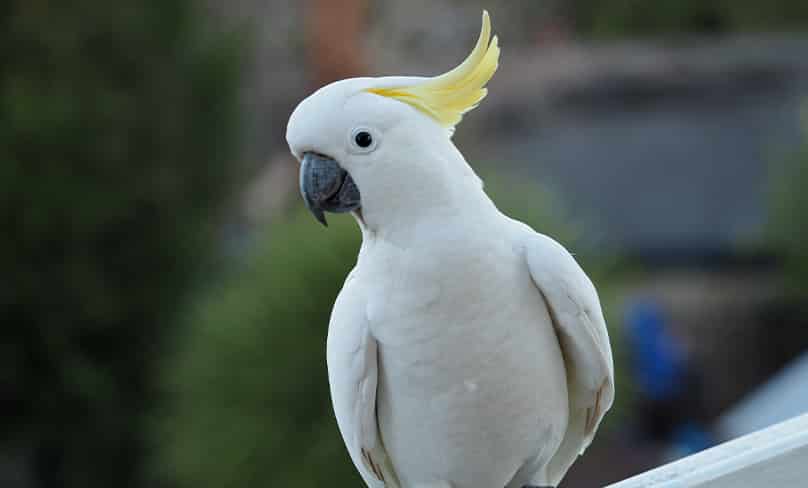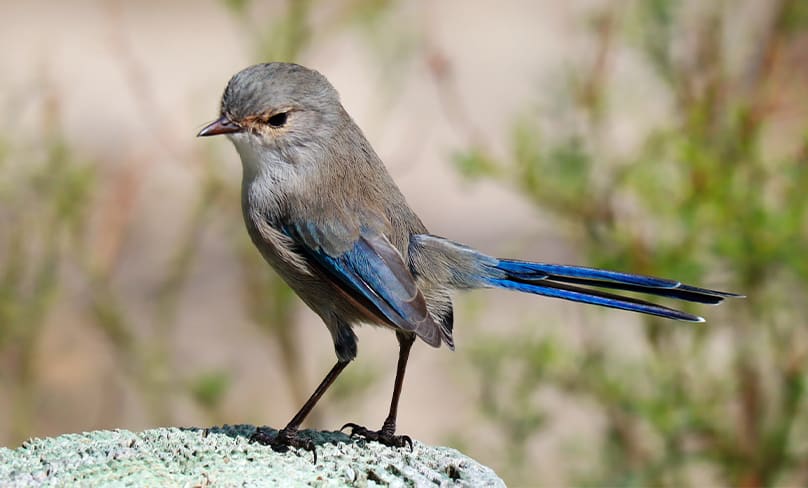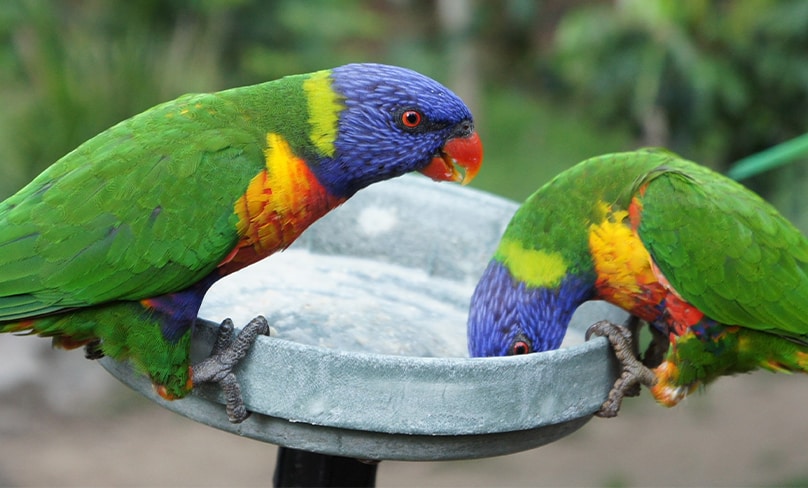
Among the dark pressures and sad limitations, the COVID lockdowns have imposed on our lives, one of the few positives has been the ability to leave home for daily exercise.
Along bush trails, through National Parks and across Council reserves and ovals, family groups, older couples and young lovers are out and about exercising, overwhelmingly respecting the rules of social isolation.
Like prisoners locked in solitary for most of the day that hour of freedom has become almost a mandatory balm for our mental health.
The mild, dry winter has helped, as has the fact that for many families the once ten now five-kilometre circle from home encompasses some of Sydney’s translucent beaches, precious local rivers and creeks and intricate networks of bushland tracks.
“The familiar soft pink and grey galahs, Ibis sheltering in the sharp safety of palm trees, a solitary red eyed Figbird searching for edible berries.”
Stand for a moment and listen to the bush sigh in the wind. Watch the gusts of the late afternoon breeze bring a shiver to the remnant blue gums.
Stop and rest on the huge slabs of tumbled sandstone along the city’s rivers, still warm from the winter sun and marvel at rocky headlands unchanged since the ice age and wonder at the generations of first peoples who saw that vista before you.
Come closer and see their shell middens, rock carvings and cave shelters, almost waiting for their return.
And then through a gully’s cool shaded air comes bird song insinuating itself into your hearing and memory. Those calls have been heard in these bushland and open places, in the forests and by the rivers, through the long centuries when there were no human sounds.

Before speech, or laughter, before children mimicking the birdsong, before music. Nothing but the call of birds marking territory or warning of black snakes and goannas, or just singing for the joy of a beautiful morning or the sadness of dusk. Nothing but bird calls and silence.
Some of those birds are impossible to miss, the bold ones, so sure of themselves and their status and place in creation.
The screeching, demanding, acrobatic Sulphur Crested Cockatoos, that must have so frightened the convicts and first settlers. Each evening they flock down to roost in the highest gum trees shredding the silence as they arrive.
Then the wild, high octane test pilots of the cockatoo family, the green, blue, red and yellow Lorikeets always flying fast and low, addicted to risk and speed.
“With their glossy black coats, fetching red and yellow collars and fussy demeanour they should do well in Melbourne.”
Fearless and ready for the inevitable crash into the reflective windows of houses. Shaking themselves awake they are just as quickly gone after their disappearing partner.
Others less confident of their place, prefer to hide away; a Finch searching for grass seed or a Yellow Robin tracking an insect.
The familiar soft pink and grey galahs, Ibis sheltering in the sharp safety of palm trees, a solitary red eyed Figbird searching for edible berries.
And the black and white curious Pee Wee, its two-tone call, impossible to forget.

And the most noticeable change to bird life in recent years, the re-emergence in large numbers of Brush Turkeys.
Like the Cane Toad and One Nation and other uninvited guests from the north, they have arrived like an odd old uncle in long socks and sandals who has decided to stay awhile.
Anywhere there is a patch of bushland, or suitable garden, they can be found, perched on back fences, in the lower levels of trees or scratching leaf litter into huge piles where females will lay eggs before abandoning them totally to his care.
The Brush Turkeys have found, like the Ibis, that living in Sydney is worth the effort. Presumably, climate change will see their steady southward migration jump the Victorian border, COVID or not.
“The COVID highlights have been unexpected and memorable. The pre-dawn, melody of Butcher Birds and the sight in the mid-morning sun of a perfect, proud Willie Wag Tail …”
With their glossy black coats, fetching red and yellow collars and fussy demeanour they should do well in Melbourne.
Then the birds unafraid of any threat we pose.
The flocks of white corellas and black cockatoos stripping mandarins and lemons from backyard trees, slicing them open with their beaks and peeling the skin neatly away.
In the early evenings of winter, the coal black Ravens with their high hurting call suggesting the pain and desolation of the lost, gives way to the night keening of the Plover until the melodious sweet call of the Magpie, welcomes the morning.

There are the nervous birds always attentive, forever watching, the waiting patient ones; a Cormorant standing on fallen timber over a creek, wings spread, feathers drying in the sun till with a flash it disappears, emerging upstream with a tadpole in its beak.
Or the white-faced Heron out of place in a park, kilometres from any waterway, knees back to front, stalking unseen insects worried out of the grass by Council workers mowing. And high above them all, the squat, sharp eyed Kookaburra, taking everything in and laughing like a schoolboy, night or day.
It’s hard to like the Australian Noisy Miners, their sprawling, brawling, narky behaviour, intent on driving all others away from their home. No passing bird, dog or human is safe from their noisy attention.
Frustratingly, many birds remain hidden despite calling you towards them. Like the Sirens drawing sailors onto the rocks, these sweetly voiced shy creatures will attempt to draw you into the muddy, disappearing overgrown paths.
With patience and luck, you may catch a glimpse of the Bell Bird, Whip Bird, or reclusive Koel. All expert in social isolation and almost impossible to see.
“All wild birds in flight or song can bring delight but during the COVID walks it was not the Cockatoos, the Pelicans circling high over the river or the, sweet voice of the Currawong calling a close to the day, that have been most memorable.”
The COVID highlights have been unexpected and memorable. The pre-dawn, melody of Butcher Birds and the sight in the mid-morning sun of a perfect, proud Willie Wag Tail, its feathers glossy black and vivid white with the irregular beat of its metronome-like tail, forever waving.
The sea eagle, floating in the warm air with an arrogant, unfair beauty that no other bird on the wing could match and that same afternoon a flock of dipping and looping Swallows harvesting the insects disturbed by passing pedestrians.
All wild birds in flight or song can bring delight but during the COVID walks it was not the Cockatoos, the Pelicans circling high over the river or the, sweet voice of the Currawong calling a close to the day, that have been most memorable.
For me it was the tiny twittering flights of Fairy Wrens, the discreet brown female and the iridescent blue of the dominant male. Only a God who wanted human beings to experience joy, could have thought them into existence, these tiny, pretty and perfect creatures?
